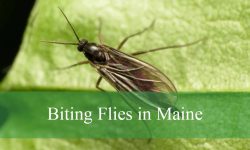The diverse landscapes of Illinois support countless insects and spiders, most of which are harmless and help maintain balance in nature. However, the state also has its share of dangerous species that can bite, sting, or spread disease. For residents and visitors alike, knowing how to identify these creatures is an important step in staying safe outdoors and at home.
Some of Illinois’s most dangerous bugs include venomous spiders, disease-carrying ticks and mosquitoes, and aggressive stinging insects. While encounters with them are often rare, they can pose serious health risks if not handled properly. Understanding their behaviors and habitats can help you avoid unpleasant or even harmful encounters.
In this guide, we’ll explore 20 of the most dangerous bugs in Illinois, complete with pictures and identification tips. From venomous arachnids to biting flies and invasive pests, you’ll learn what to watch out for and how to protect yourself while enjoying the outdoors.
Types of Dangerous Bugs Found in Illinois
Deer Tick (Blacklegged Tick)
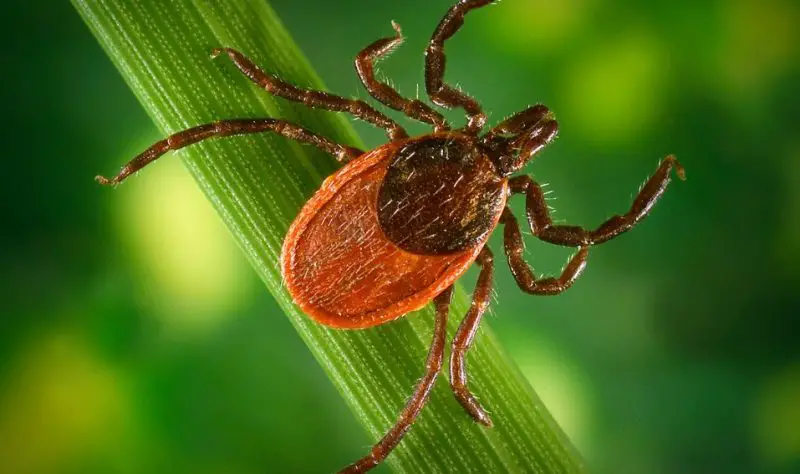
The Deer Tick, also known as the Blacklegged Tick, is one of the most dangerous parasites in Illinois due to its ability to transmit multiple serious diseases. It is very small, with adults measuring only 2–3 millimeters. Females are easily recognized by their reddish-brown bodies with black dorsal shields, while males are darker and smaller.
These ticks thrive in wooded areas, tall grasses, and along trails where deer, rodents, and other hosts are present. They attach themselves to mammals, including humans, feeding on blood for several days before dropping off. Peak activity in Illinois occurs in spring and fall, though they can be active anytime the weather is mild.
Deer Ticks are the primary carriers of Lyme disease in Illinois, a condition that can cause fever, fatigue, joint pain, and neurological complications if left untreated. They can also transmit babesiosis, a malaria-like disease, and anaplasmosis, both of which affect the blood and immune system. Because of these risks, their impact on human health is considered high.
Protecting against Deer Ticks involves wearing protective clothing, using insect repellent with DEET or permethrin, and performing thorough tick checks after spending time outdoors. Prompt removal of ticks reduces the chance of disease transmission. Monitoring pets is also important, as they can bring ticks into homes.
Black Widow Spider
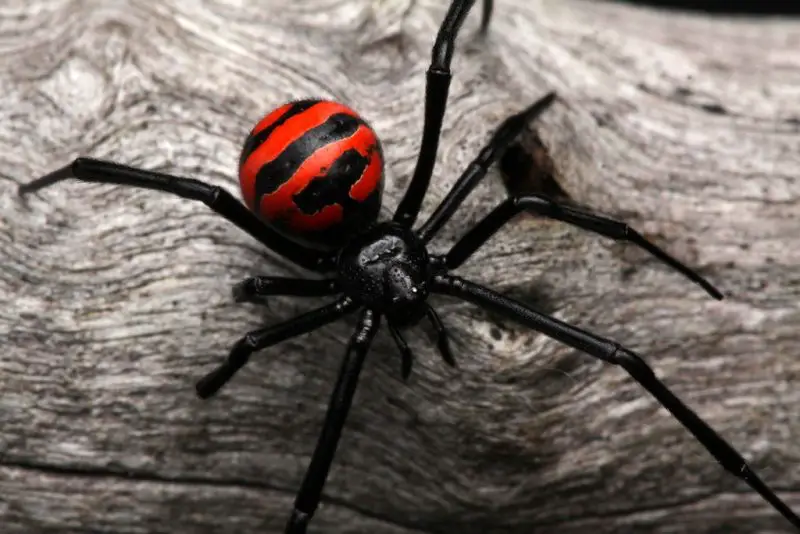
The Black Widow Spider is one of the most feared spiders in Illinois because of its potent venom. Adult females are shiny black with a distinctive red hourglass marking on the underside of their abdomen, making them relatively easy to identify. Males are smaller, lighter in color, and less dangerous than females. They typically measure about 1.5 inches including the leg span.
These spiders prefer dark, sheltered areas such as woodpiles, sheds, garages, and under rocks. They spin irregular, tangled webs close to the ground where they wait for insects and other small creatures to get trapped. Unlike some spiders, the Black Widow is not aggressive and usually only bites when disturbed or threatened.
The venom of the Black Widow contains neurotoxins that affect the nervous system. A bite may cause intense pain, cramping, nausea, and in rare cases seizures or respiratory issues. While fatalities are extremely rare thanks to modern medical treatment, the symptoms can be severe and require medical attention, particularly for children and the elderly.
In Illinois, encounters are most likely in rural areas or around human structures that provide hiding places. Preventive measures include wearing gloves when handling wood or debris and keeping storage areas clean. Understanding their behavior reduces the risk of accidental bites.
Brown Recluse Spider
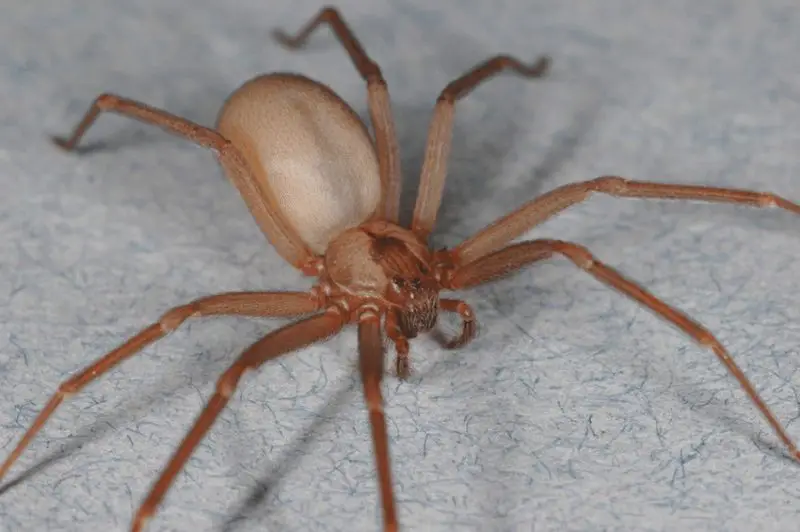
The Brown Recluse Spider is another venomous species in Illinois, notorious for its potentially dangerous bite. It is light to medium brown with a violin-shaped marking on its back, which gives rise to its nickname “fiddleback.” Adults typically range from a quarter inch to three-quarters of an inch in body length.
This spider prefers quiet, undisturbed locations such as basements, attics, closets, and behind furniture. True to its name, it is reclusive by nature and avoids human interaction whenever possible. Most bites occur when the spider is accidentally pressed against the skin, such as when putting on shoes or clothing left on the floor.
The venom of the Brown Recluse contains cytotoxins that can destroy tissue at the site of the bite. This can lead to necrotic ulcers, severe skin damage, and in some cases systemic illness. Although not all bites result in serious complications, the potential for severe reactions makes this spider particularly concerning.
In Illinois, the Brown Recluse is more common in the southern part of the state. Reducing clutter in storage areas and shaking out clothing or shoes before wearing them are practical steps to avoid encounters. Prompt medical care is crucial if bitten, as early treatment can minimize long-term damage.
American Dog Tick
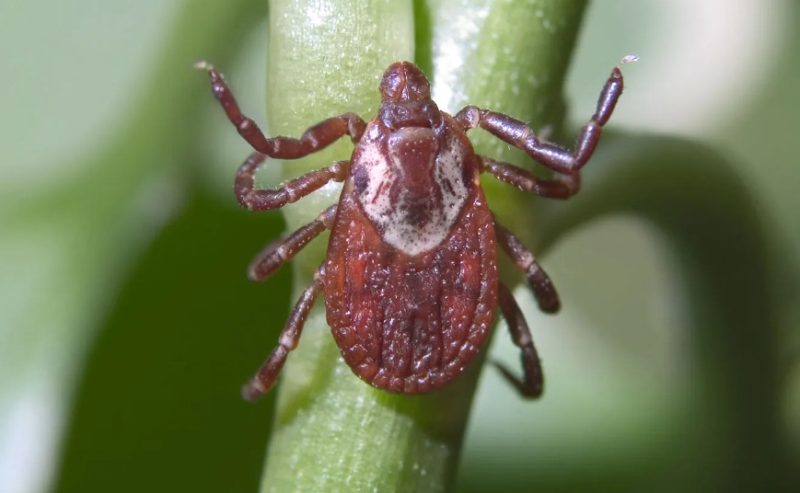
The American Dog Tick is larger than the Deer Tick and one of the most widespread tick species in Illinois. Adults can grow up to 15 millimeters in length when engorged, with brown bodies marked by whitish or gray patterns on their backs. Unlike Deer Ticks, they are easier to spot due to their size.
These ticks are commonly found in grassy fields, roadsides, and areas with little tree cover. They prefer to feed on medium to large mammals, particularly dogs, but they readily attach to humans as well. Peak activity occurs in spring and early summer when people and pets are more likely to spend time outdoors.
The American Dog Tick is a known vector of Rocky Mountain spotted fever (RMSF), a bacterial disease that can be life-threatening without prompt antibiotic treatment. Symptoms of RMSF include fever, rash, headache, and muscle pain. This species can also transmit tularemia, another serious bacterial infection.
Preventive measures are similar to those used against Deer Ticks: protective clothing, repellents, and regular tick checks. Dog owners should use veterinarian-approved tick prevention products to protect pets. While the American Dog Tick does not carry Lyme disease, its ability to transmit other dangerous illnesses makes it a serious concern in Illinois.
Mosquitoes (Culex species)
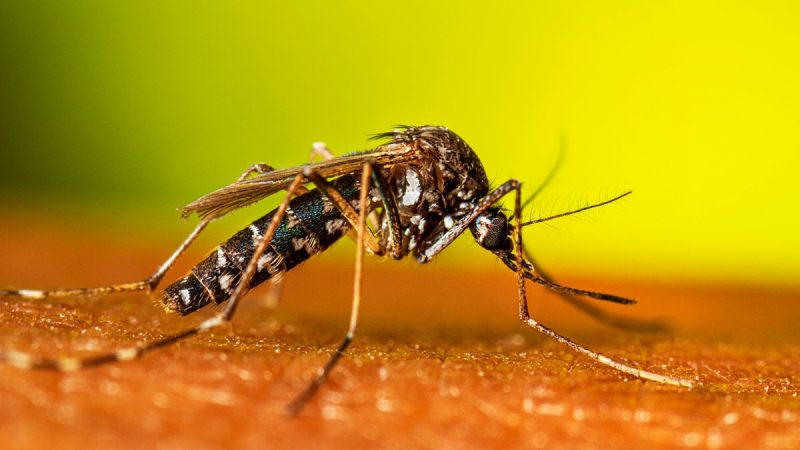
Mosquitoes are among the most common and bothersome insects in Illinois, and certain species pose significant health risks. The Culex mosquito is especially concerning because of its role as a carrier of West Nile virus. These mosquitoes are small, slender insects with long legs, narrow wings, and piercing mouthparts designed for blood feeding.
Culex mosquitoes breed in standing water such as ponds, clogged gutters, birdbaths, and containers left outdoors. They are most active during the evening and nighttime hours. Unlike some mosquito species that prefer animals, Culex mosquitoes frequently bite humans, making them efficient disease vectors.
West Nile virus, transmitted through their bites, can cause flu-like symptoms in most people but occasionally leads to severe complications such as encephalitis or meningitis. Older adults and individuals with weakened immune systems are at greatest risk of life-threatening illness. Illinois has reported numerous cases of West Nile virus infections over the years, underscoring the public health concern.
Controlling mosquito populations involves eliminating sources of standing water, using insect repellents, and installing screens on windows and doors. Local health authorities often monitor mosquito populations and apply treatments to reduce the risk of outbreaks. Awareness and prevention are the most effective defenses against these dangerous pests.
Kissing Bug (Triatoma species)
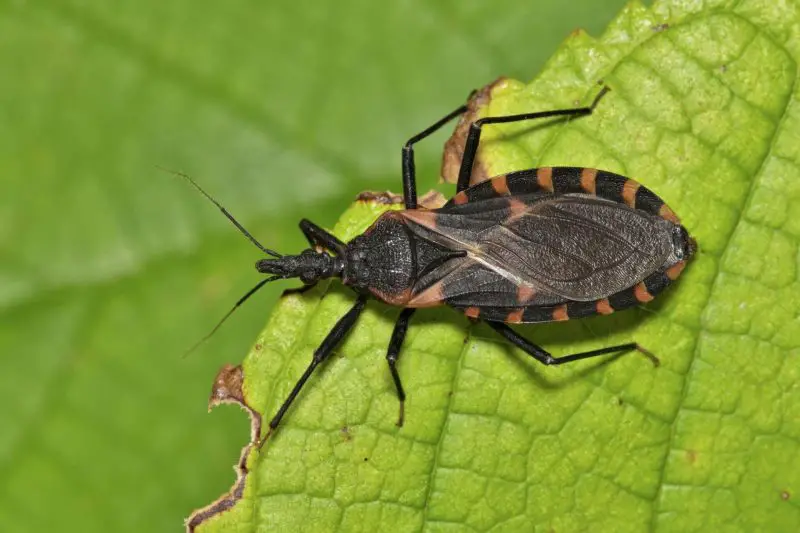
The Kissing Bug, belonging to the Triatoma genus, is an insect rarely encountered in Illinois but noteworthy because of the severe disease it can transmit. These bugs are usually about 1 inch long, with a dark brown or black body marked by orange or red stripes along the edges of their abdomen. Their narrow heads and long, cone-shaped mouthparts help distinguish them from other insects.
Kissing Bugs are nocturnal and typically feed on the blood of mammals, including humans. They earned their name from their tendency to bite people around the mouth or eyes while they sleep. Although the bite itself is usually not painful, it can leave behind small red marks that resemble other insect bites.
The greatest danger of Kissing Bugs lies in their ability to transmit Chagas disease. This disease is caused not by the bite itself but by parasites present in the insect’s feces. If fecal matter enters the bite wound or mucous membranes, infection can occur. While Chagas disease is rare in Illinois, it poses serious long-term health risks such as heart and digestive system complications.
In Illinois, Kissing Bugs are not established like in southern states, but isolated cases of detection have been reported. Their presence highlights the importance of being aware of unusual biting insects and reporting suspected sightings to public health authorities. Preventive measures include sealing cracks in homes, using bed nets, and avoiding sleeping near open windows in rural areas.
Yellowjackets and Wasps
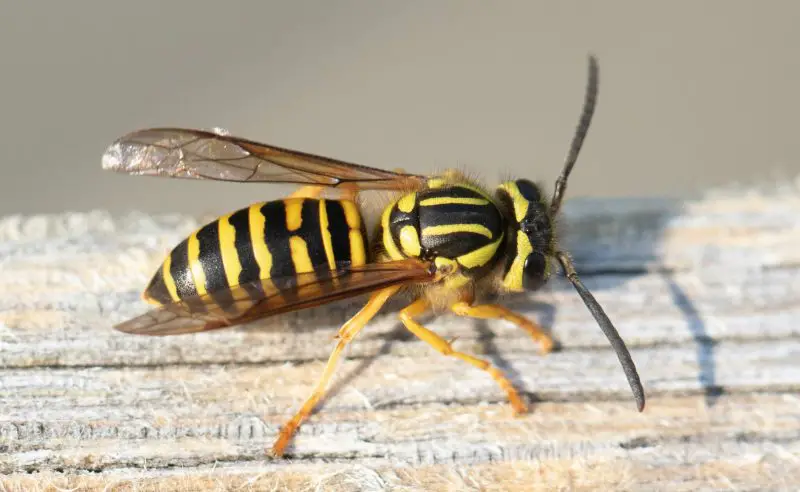
Yellowjackets and wasps are some of the most aggressive stinging insects found in Illinois. Yellowjackets are recognizable by their black-and-yellow patterned bodies, while paper wasps and hornets may display darker or reddish markings. They have slender waists, smooth bodies, and transparent wings. Unlike bees, they can sting multiple times.
These insects are social and build nests in trees, shrubs, attics, or even underground cavities. They become particularly aggressive in late summer and fall when food sources become scarce. Disturbing a nest can trigger a coordinated attack, making them dangerous to people who get too close.
The sting of a yellowjacket or wasp is extremely painful and can cause swelling, redness, and itching. For individuals allergic to insect venom, a sting can result in anaphylaxis, a life-threatening reaction requiring immediate medical attention. Even in non-allergic people, multiple stings can cause systemic reactions such as nausea, dizziness, or difficulty breathing.
In Illinois, these insects are most active from spring through fall. Controlling their presence involves locating and safely removing nests, often with the help of professionals. Avoiding sweet foods and drinks outdoors can also reduce encounters, as yellowjackets are attracted to sugary substances.
Honey Bees
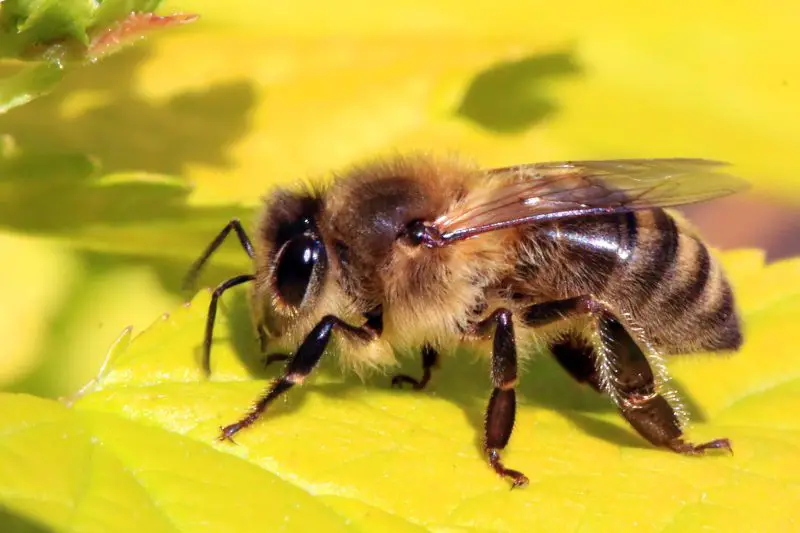
Honey Bees are beneficial insects in Illinois, playing an essential role in pollination. They are medium-sized, fuzzy-bodied insects with golden-brown coloration and dark banding. Colonies are highly organized, with workers, drones, and a single queen. Unlike wasps, honey bees have barbed stingers that usually remain in the skin after stinging.
Honey bees are generally non-aggressive and only sting when they feel their hive is threatened or when handled roughly. Their stingers are single-use, meaning the bee dies shortly after delivering a sting. Despite this, honey bee colonies can mount a strong defense when disturbed, with multiple bees stinging at once.
The venom of honey bees causes sharp pain, swelling, and redness at the sting site. While most people recover quickly, individuals with severe allergies can suffer from anaphylaxis, which includes symptoms such as difficulty breathing, dizziness, and a rapid drop in blood pressure. For these individuals, even a single sting can be life-threatening.
In Illinois, honey bees are widespread, both in wild colonies and managed hives maintained by beekeepers. Because of their ecological importance, they are not usually exterminated unless a colony poses a direct threat to humans. Wearing protective clothing and exercising caution near hives helps minimize the risk of stings.
Fire Ants
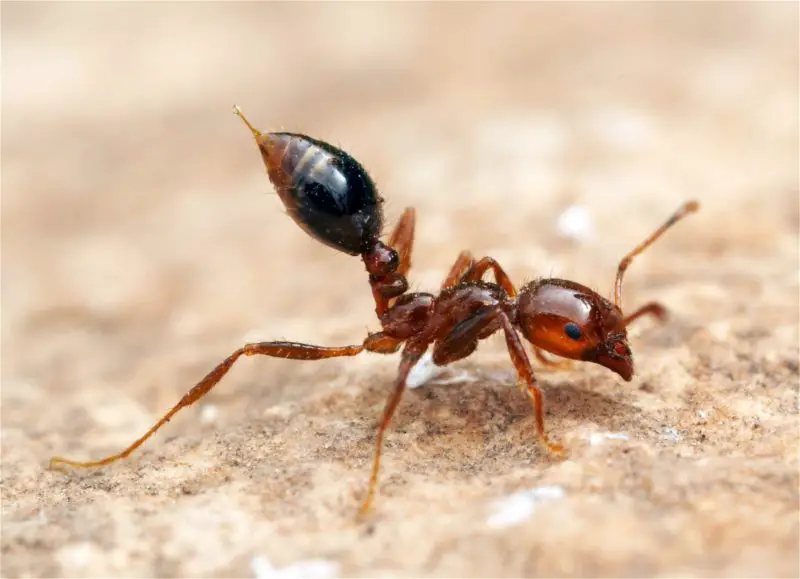
Fire Ants are not native to Illinois but have occasionally been reported in the southern regions of the state. They are small reddish-brown ants, typically 1/8 to 1/4 inch long, and form large colonies with noticeable mounds in soil. When disturbed, they swarm aggressively and sting repeatedly.
Their sting injects venom that causes a burning sensation followed by the formation of itchy, pus-filled blisters. While the pain and irritation are unpleasant for most people, those allergic to insect venom may suffer dangerous reactions including difficulty breathing and anaphylactic shock. Multiple stings can also cause systemic illness even in non-allergic individuals.
Fire Ants are highly aggressive compared to other ant species. They quickly defend their nests in large numbers, which makes encounters particularly hazardous. Pets and livestock may also be affected, as these ants attack any perceived intruder.
Though not widespread in Illinois, their occasional presence raises concern because they can spread through transported soil or nursery plants. Effective control requires professional pest management, as colonies can be difficult to eradicate completely. Awareness and caution are essential when traveling in regions where Fire Ants are established.
Blister Beetle
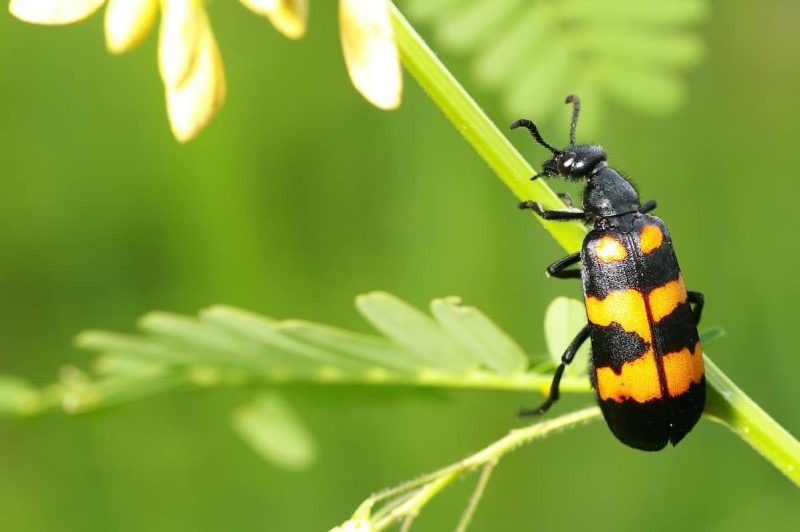
Blister Beetles are elongated, soft-bodied insects that range in color from gray and black to metallic green or striped patterns. They are typically 0.5 to 1 inch long and are found in fields, gardens, and areas with flowering plants. In Illinois, several species of Blister Beetles are present, often feeding on crops like alfalfa.
These beetles are not aggressive and do not bite or sting. Instead, their danger lies in a chemical called cantharidin, which is released when the beetle is crushed or handled. Contact with cantharidin can cause painful skin blisters, irritation, and swelling.
Accidental ingestion of Blister Beetles is particularly hazardous. Cantharidin is toxic when swallowed, and if beetles contaminate forage, livestock such as horses may suffer severe or even fatal poisoning. In humans, ingestion can cause nausea, abdominal pain, and damage to the urinary tract.
In Illinois, encounters usually happen in agricultural settings or gardens. Protective gloves should be worn when handling plants where Blister Beetles may be present. Because they play a role in controlling pest populations, careful management rather than eradication is often recommended.
Assassin Bug (Wheel Bug)
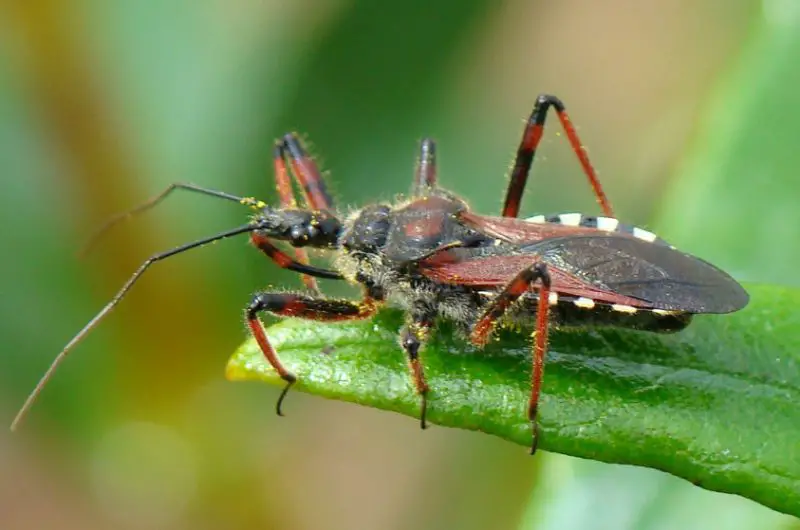
The Wheel Bug, a large member of the assassin bug family, is one of the most unusual and intimidating insects in Illinois. It is named for the distinctive spiny, wheel-shaped crest on its thorax, which makes it easily recognizable. Adults grow to about 1.5 inches in length, with grayish-brown bodies and long, piercing mouthparts used to feed on prey.
Wheel Bugs are beneficial predators, feeding on caterpillars, beetles, and other insects that damage crops and gardens. They are slow-moving and generally non-aggressive toward humans. However, if handled or provoked, they can deliver an extremely painful bite with their beak-like mouthparts.
The bite of a Wheel Bug is not venomous in the same way as spiders, but it injects digestive enzymes that cause localized pain, swelling, and sometimes numbness that may last for days. Although rarely dangerous, the intensity of the pain often surprises people and can lead to secondary infections if not treated properly.
In Illinois, Wheel Bugs are commonly found in gardens, wooded edges, and fields during late summer and fall. They are considered beneficial insects, so avoidance rather than extermination is the best approach. Wearing gloves when gardening helps reduce the risk of accidental bites.
Wolf Spider
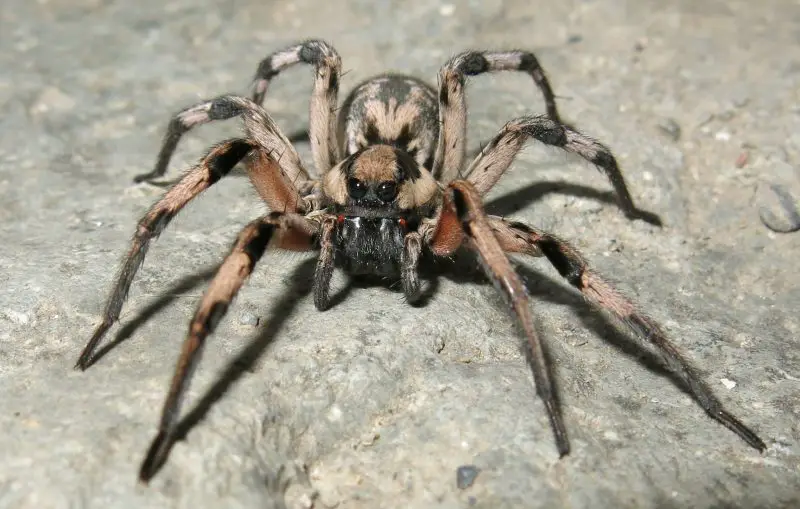
Wolf Spiders are large, fast-moving spiders commonly seen in Illinois. They range in size from half an inch to over two inches in body length and are covered in brown, gray, or black camouflage markings. Unlike web-building spiders, Wolf Spiders actively hunt prey on the ground and are often seen running across lawns, basements, or wooded areas.
These spiders are easily recognized by their robust bodies, long legs, and eight prominent eyes arranged in three rows, giving them excellent night vision. They are solitary hunters, feeding on insects and other small arthropods. Their speed and size often make them appear more threatening than they truly are.
While Wolf Spiders can bite if cornered or handled, their venom is not medically significant to humans. A bite may cause localized pain, redness, and swelling similar to a bee sting. In some cases, secondary infection may occur if the bite is not properly cleaned and cared for.
Wolf Spiders inhabit a wide variety of environments across Illinois, from fields and forests to homes and gardens. Because they help control pest insect populations, they are considered beneficial. Avoiding direct contact and using caution when moving objects outdoors reduces the chance of being bitten.
Giant Water Bug
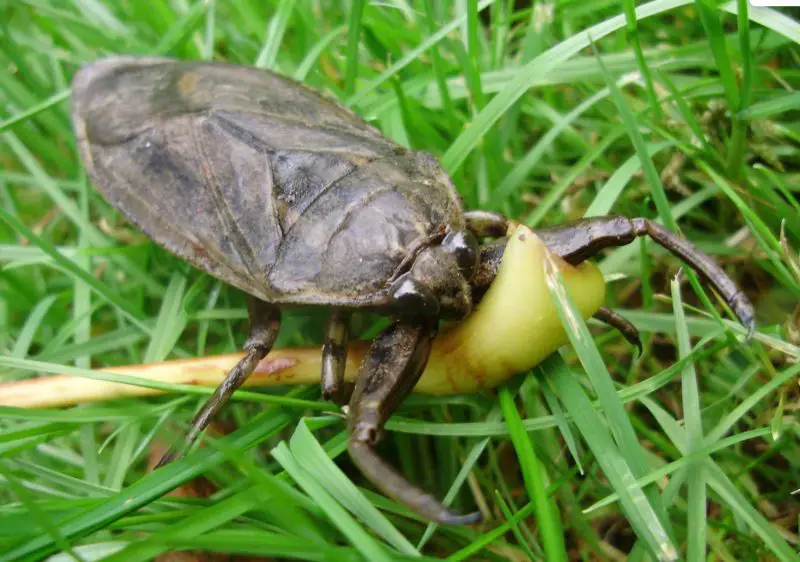
The Giant Water Bug is one of the largest true bugs found in Illinois, sometimes reaching over 2 inches in length. These aquatic insects are dark brown, flat-bodied, and equipped with raptorial front legs adapted for grasping prey. They are also known as “toe-biters” because of their painful bite.
Giant Water Bugs live in ponds, lakes, and slow-moving streams where they feed on fish, tadpoles, and other aquatic creatures. They are skilled ambush predators, waiting motionless before striking prey with their sharp beaks to inject digestive enzymes. Although they are primarily aquatic, they are sometimes attracted to lights at night and may be found on land.
The bite of a Giant Water Bug is not venomous to humans, but it is described as one of the most painful insect bites in North America. The intense burning pain can cause short-term shock and swelling. Fortunately, the effects are temporary and rarely require medical attention beyond basic wound care.
In Illinois, these insects are encountered most often by swimmers, anglers, or people wading in freshwater habitats. Because they play an important ecological role as predators, they should be left undisturbed. Wearing water shoes can reduce the risk of accidental bites.
Horseflies
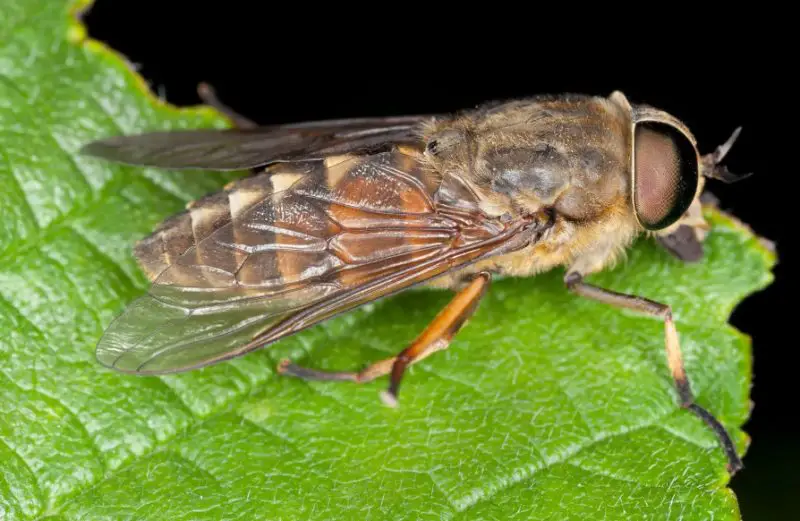
Horseflies are large, fast-flying insects that can be a major nuisance in Illinois during the summer months. They are typically 0.5 to 1 inch long, with stout gray or black bodies and brightly colored or patterned eyes. Female horseflies are the ones that bite, as they require blood meals to reproduce.
Horseflies use their sharp, scissor-like mouthparts to cut through skin, creating a painful wound that often bleeds freely. Their feeding method makes bites more painful than those of mosquitoes and increases the risk of bacterial infection. Swelling, itching, and redness are common after a bite.
Unlike ticks or mosquitoes, horseflies are not major vectors of disease in Illinois, but they can transmit some pathogens among livestock. In humans, their main threat comes from secondary infections caused by open wounds. Repeated bites may also cause allergic reactions in sensitive individuals.
These insects are most active on warm, sunny days near water, fields, and wooded edges. Wearing long sleeves, using insect repellent, and avoiding outdoor activity during peak hours can help minimize encounters. Their strong flight makes them persistent pests, but they usually retreat once they fail to feed.
Fleas
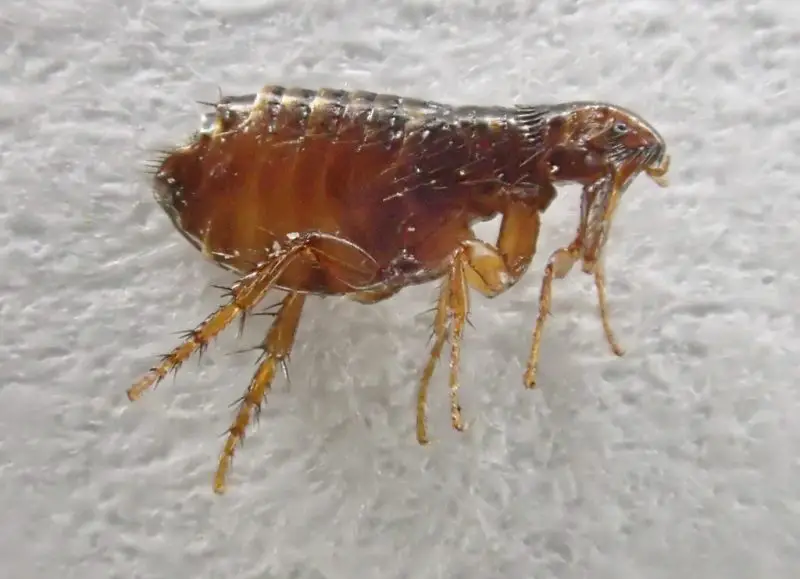
Fleas are tiny, wingless parasites commonly found on pets and wildlife in Illinois. Measuring only 1–3 millimeters in length, they are reddish-brown and flattened from side to side, enabling them to move easily through animal fur. Their long hind legs allow them to jump impressive distances relative to their size.
Fleas feed on the blood of mammals and birds, with dogs and cats being their primary hosts in urban environments. Infestations occur quickly, as fleas reproduce rapidly and can lay hundreds of eggs in bedding, carpets, and furniture. Human bites typically appear as small, red, itchy welts, often on the legs and ankles.
In Illinois, fleas rarely transmit serious diseases to humans, but they can spread tapeworms to pets and occasionally cause allergic dermatitis in sensitive individuals. Historically, fleas have been vectors of plague in other parts of the world, though this is not a concern in Illinois today.
Preventing flea infestations requires treating pets with veterinarian-approved products, regularly cleaning bedding and carpets, and maintaining outdoor areas where pets roam. While not as dangerous as venomous spiders or disease-carrying ticks, fleas remain a persistent nuisance that can affect both pets and humans.
Cockroaches
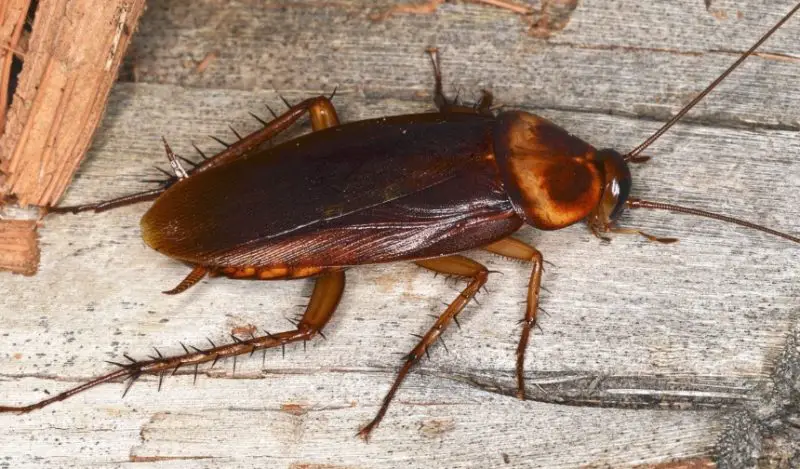
Cockroaches are one of the most common household pests in Illinois. Species such as the German Cockroach and American Cockroach are frequently found in homes, restaurants, and sewer systems. They are flat-bodied, brown or reddish insects with long antennae and fast movements, usually active at night. Adults range in size from half an inch to over two inches depending on the species.
Unlike biting insects, cockroaches pose their greatest danger through contamination. They crawl across garbage, sewage, and food preparation areas, carrying bacteria, fungi, and parasites on their bodies. These pathogens can be transferred to food and surfaces, leading to food poisoning, diarrhea, and other illnesses.
Cockroach allergens are another health risk, particularly for children and individuals with asthma. Their shed skins, droppings, and saliva can trigger allergic reactions and worsen respiratory conditions. Heavy infestations are often accompanied by an unpleasant odor due to these secretions.
In Illinois, cockroaches thrive in warm, humid indoor environments. Prevention includes maintaining cleanliness, sealing cracks, fixing leaks, and reducing clutter. Professional pest control may be necessary in severe infestations, as cockroaches are resilient and reproduce quickly.
Bed Bugs
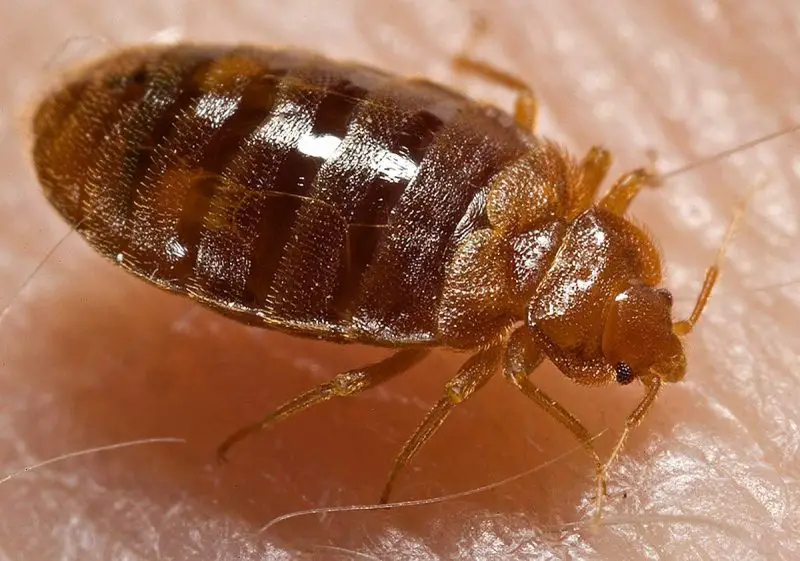
Bed Bugs are small, flat, reddish-brown insects that feed on human blood, usually at night. Adult bed bugs measure about 5–7 millimeters long and are oval-shaped, making them easy to hide in mattresses, box springs, headboards, and furniture seams. They are expert hitchhikers, often spreading through luggage, clothing, or secondhand furniture.
Bed Bug bites appear as small red welts, often in clusters or lines, on exposed skin. While the bites themselves are painless, the resulting itching and irritation can be intense. Excessive scratching may lead to secondary infections, especially in children. Unlike mosquitoes or ticks, bed bugs are not known to transmit diseases.
The psychological effects of bed bug infestations can be significant, causing stress, anxiety, and insomnia. Their presence often leads to repeated sleepless nights and a sense of discomfort in one’s own home. Bed bugs are notoriously difficult to eradicate due to their ability to hide in tiny crevices and survive long periods without feeding.
In Illinois, bed bug infestations are more common in urban areas, particularly in apartments, hotels, and dormitories. Prevention includes inspecting luggage after travel, avoiding secondhand furniture, and washing bedding regularly. Professional extermination is often required to fully eliminate them.
Stink Bugs
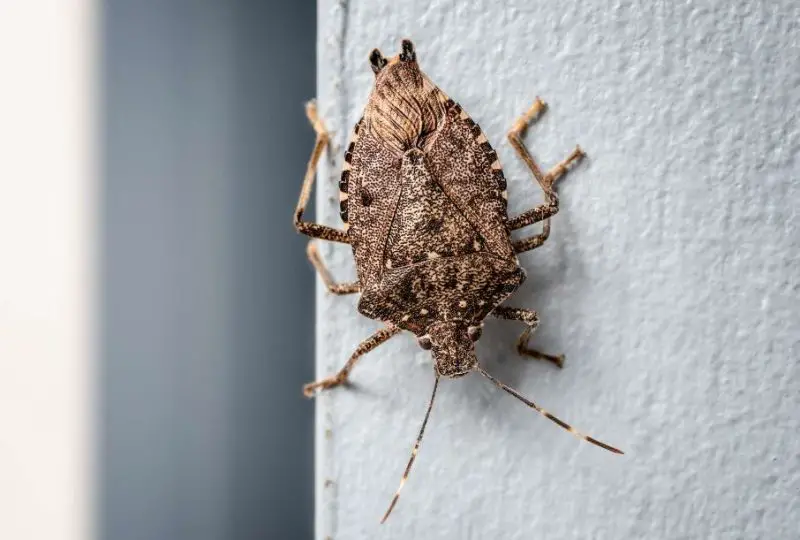
Stink Bugs, particularly the Brown Marmorated Stink Bug, are invasive insects that have spread widely across Illinois. They are shield-shaped, about half an inch long, and mottled brown or gray in color. Their most distinguishing feature is the foul odor they release when crushed or disturbed.
These insects are primarily plant feeders, using their piercing mouthparts to suck juices from fruits, vegetables, and ornamental plants. While they do not pose a direct threat to human health, they are considered agricultural pests because they damage crops such as apples, soybeans, and corn.
For humans, Stink Bugs are mainly a nuisance. They may invade homes in large numbers during fall as they seek shelter for overwintering. Handling them can cause mild skin irritation or allergic reactions in sensitive individuals, but they are not dangerous compared to venomous or disease-carrying species.
In Illinois, they are most noticeable in autumn when they cluster around windows, doors, and walls. Preventive steps include sealing cracks in buildings and vacuuming up intruders rather than crushing them, which releases their strong odor.
Cicada Killer Wasps
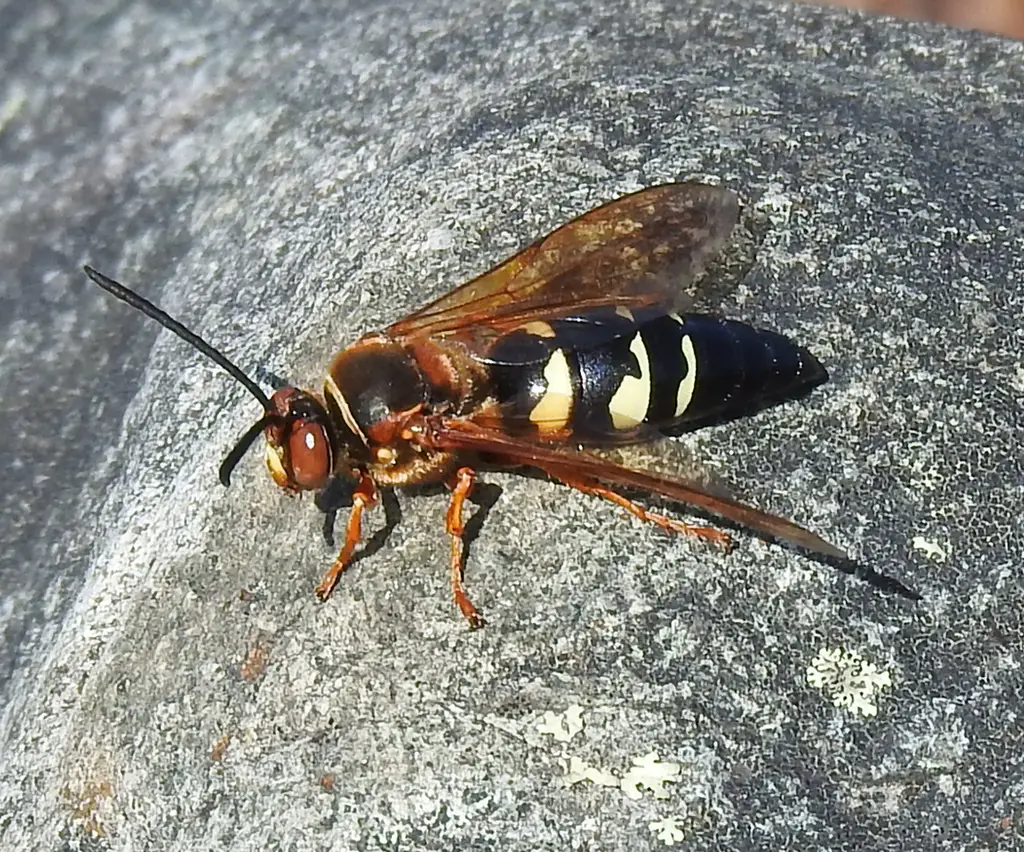
Cicada Killer Wasps are among the largest wasps in Illinois, with adults reaching 1.5 to 2 inches long. They have black bodies with yellow markings and reddish-brown wings. Despite their intimidating size, they are solitary wasps and not nearly as aggressive as yellowjackets or hornets.
These wasps dig burrows in sandy soil, where females drag paralyzed cicadas to serve as food for their larvae. Although their appearance may cause alarm, Cicada Killers rarely sting humans unless directly threatened or handled. Males cannot sting at all, though they may act territorial.
A sting from a Cicada Killer can be painful but is not usually dangerous unless the person is allergic to wasp venom. Unlike social wasps, they do not swarm or defend colonies, which greatly reduces the risk of multiple stings. Their ecological role is beneficial, as they help regulate cicada populations.
In Illinois, Cicada Killers are active during midsummer when cicadas are abundant. They are most often seen in sandy lawns, playgrounds, or gardens. Because they are not aggressive, control is usually unnecessary unless their burrows become a nuisance in heavily used areas.
Harvestmen (Daddy Longlegs)
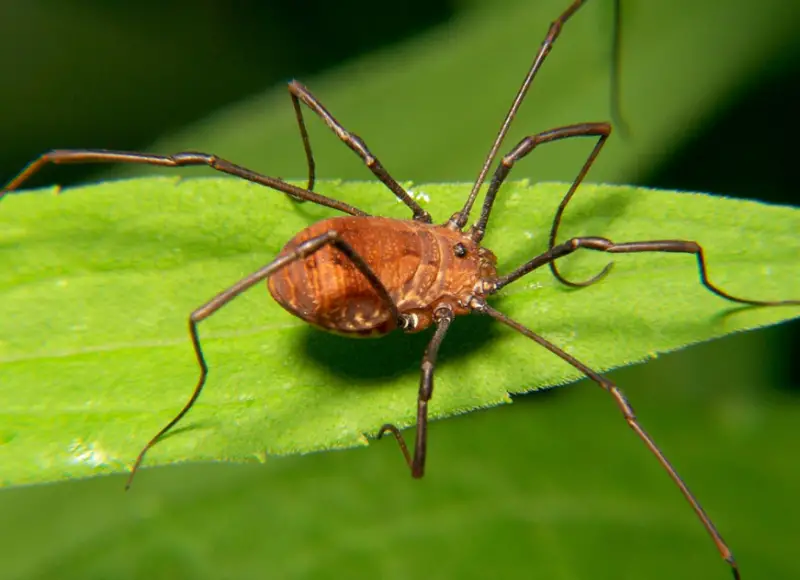
Harvestmen, commonly called Daddy Longlegs, are arachnids often mistaken for spiders. They have small, rounded bodies and extremely long, thin legs that make them instantly recognizable. Unlike true spiders, they have a single fused body segment and do not produce silk or spin webs.
These creatures feed on decaying plant matter, fungi, and small insects, playing an important role in decomposition. They are harmless to humans and lack venom glands or fangs capable of biting. Despite persistent myths, Harvestmen are not venomous and pose no danger at all.
In Illinois, Harvestmen are commonly found in gardens, forests, and damp areas such as basements or under logs. They are most active at night and may be seen congregating in large groups during cooler weather. Their presence is often seasonal, with peaks in late summer and fall.
The biggest “threat” Harvestmen pose is psychological, as their appearance can alarm people unfamiliar with their harmless nature. Far from being pests, they are beneficial creatures that help keep ecosystems balanced by consuming organic debris.
Conclusion
Illinois is home to a wide variety of insects and arachnids, and while most are harmless, several species can pose risks to humans. The level of danger varies greatly—from venomous species like the Black Widow and Brown Recluse, to disease-carrying pests such as ticks and Culex mosquitoes, to insects that deliver painful stings or bites like wasps, honey bees, horseflies, and fire ants. On the other hand, some species look intimidating but are rarely dangerous, including the Cicada Killer Wasp and the harmless Harvestmen (Daddy Longlegs).
For the majority of people in Illinois, encounters with these creatures will result in nothing more than mild discomfort. Serious medical issues are uncommon but can occur, especially in cases of allergic reactions, infections, or tick-borne illnesses. Knowing how to identify these species, where they are most commonly found, and what precautions to take can go a long way in preventing negative encounters.
Overall, awareness and prevention are the best defenses. By taking basic precautions—such as using insect repellent, wearing protective clothing, sealing cracks in the home, and avoiding direct handling—you can significantly reduce the risks associated with Illinois’s most dangerous bugs.
FAQs About Dangerous Bugs in Illinois
What is the most dangerous bug in Illinois?
The Black Widow Spider is considered the most dangerous due to its neurotoxic venom, which can cause severe muscle pain and systemic symptoms. However, bites are rare and fatalities are extremely uncommon.
Do Brown Recluse Spiders live in Illinois?
Yes. Brown Recluse Spiders are found in Illinois, especially in dark, undisturbed areas like basements, attics, and storage boxes. Their bites can cause skin necrosis, though many heal without serious complications.
Are mosquitoes in Illinois dangerous?
Yes, particularly Culex mosquitoes, which can transmit West Nile virus. Most bites only cause itching and swelling, but some cases can lead to serious illness.
Can ticks in Illinois spread Lyme disease?
Yes. The Deer Tick (Blacklegged Tick) is present in Illinois and can transmit Lyme disease, babesiosis, and anaplasmosis. Preventive steps include wearing long clothing and performing tick checks after outdoor activities.
Which stinging insects are most aggressive in Illinois?
Yellowjackets and wasps are the most aggressive stinging insects in the state. They can sting multiple times and pose a serious risk to people with allergies.
Are Cicada Killer Wasps dangerous?
Despite their intimidating size, Cicada Killers are solitary wasps and rarely sting humans. Their stings are painful but not dangerous unless someone has a venom allergy.
Do bed bugs in Illinois spread disease?
No. Bed bugs are not known to transmit diseases, but their bites cause itching, irritation, and psychological stress. Infestations can be difficult to eradicate.
What should I do if bitten by a dangerous bug in Illinois?
Clean the area with soap and water, apply a cold compress, and monitor for signs of infection or allergic reaction. Seek medical attention if symptoms worsen, if a tick bite shows a rash, or if you experience severe allergic reactions.




